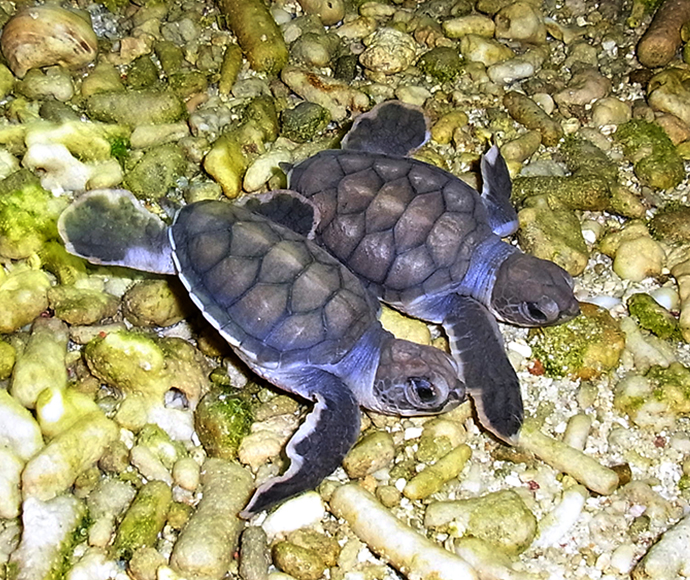More than 200 baby sea turtles have safely found their way to the ocean as this year's NSW sea turtle nesting season comes to close.

Seven nests were found on NSW beaches from Tweed to Sydney's Northern Beaches between November 2019 and May 2020, a significant increase on last year's numbers.
NSW TurtleWatch Project Officer Holly West said it was wonderful to see green turtles and loggerhead turtles, both threatened species, nesting on northern NSW beaches.
"With an increasing number of threats to sea turtles, including vessel strikes, entanglements and coastal development infringing on nesting grounds, it's a relief to see them returning to our beaches year after year to lay their eggs.
"The local area NPWS staff and Turtle Watch volunteers have really put in the hard yards this year, spending more than 90 hours monitoring beaches up and down the coast for nesting activity, signs of predation and indicators that eggs have begun to hatch.
"We try to intervene as little as possible, however with so few turtles surviving to adult breeding age, we want to give the baby turtles the best possible chance of survival.
"To have ended the season with 224 hatchlings safely setting off into the 'big blue' – that's a really positive outcome," said Ms West.
Sand temperatures can influence the gender of hatchlings, with cooler sand temperatures producing males while warmer temperatures produce females.
"Our staff in collaboration with NSW National Parks and Wildlife Service rangers deployed temperature data loggers at each of the NSW nests sites. The cooler temperatures recorded suggest that most likely all of our 224 hatchlings will be male, which is good news for the sea turtle population.
"As global temperatures rise, we are seeing a potential feminisation of our sea turtle populations. Nests in NSW may become critically important in the years to come as a means of maintaining gender diversity in sea turtle populations," said Ms West.
"We ask beach and water users to be mindful of sea turtles while enjoying NSW's coastal waters. Keep your eyes peeled for turtle tracks while walking the beach and if you spot some, notify NPWS or Australian Seabird Rescue as soon as you can.
"The sooner you let us know, the quicker we can get down to the beach and ensure the nest is protected. Even just two hours of onshore wind can completely obscure turtle tracks, making it impossible for us to locate and monitor the nest.
"We've also seen a number of adult turtles injured after being struck by recreational vessels. If you're out on the water, designate a lookout for your vessel and consider travelling more slowly in areas where turtles are often sighted.
The NSW TurtleWatch program has been developed by Australian Seabird Rescue and is supported by the NSW Government's Saving our Species Program and Marine Estate Management Strategy. It is a citizen science program involving volunteers collecting valuable data for marine turtles nesting in NSW and their potential threats.
If you see turtle tracks, hatchlings or injured or dead sea turtles on a NSW beach, contact Australian Seabird Rescue on 0428 862 852 or NSW National Parks and Wildlife Service on 13000PARKS (1300 07275) as soon as possible.






